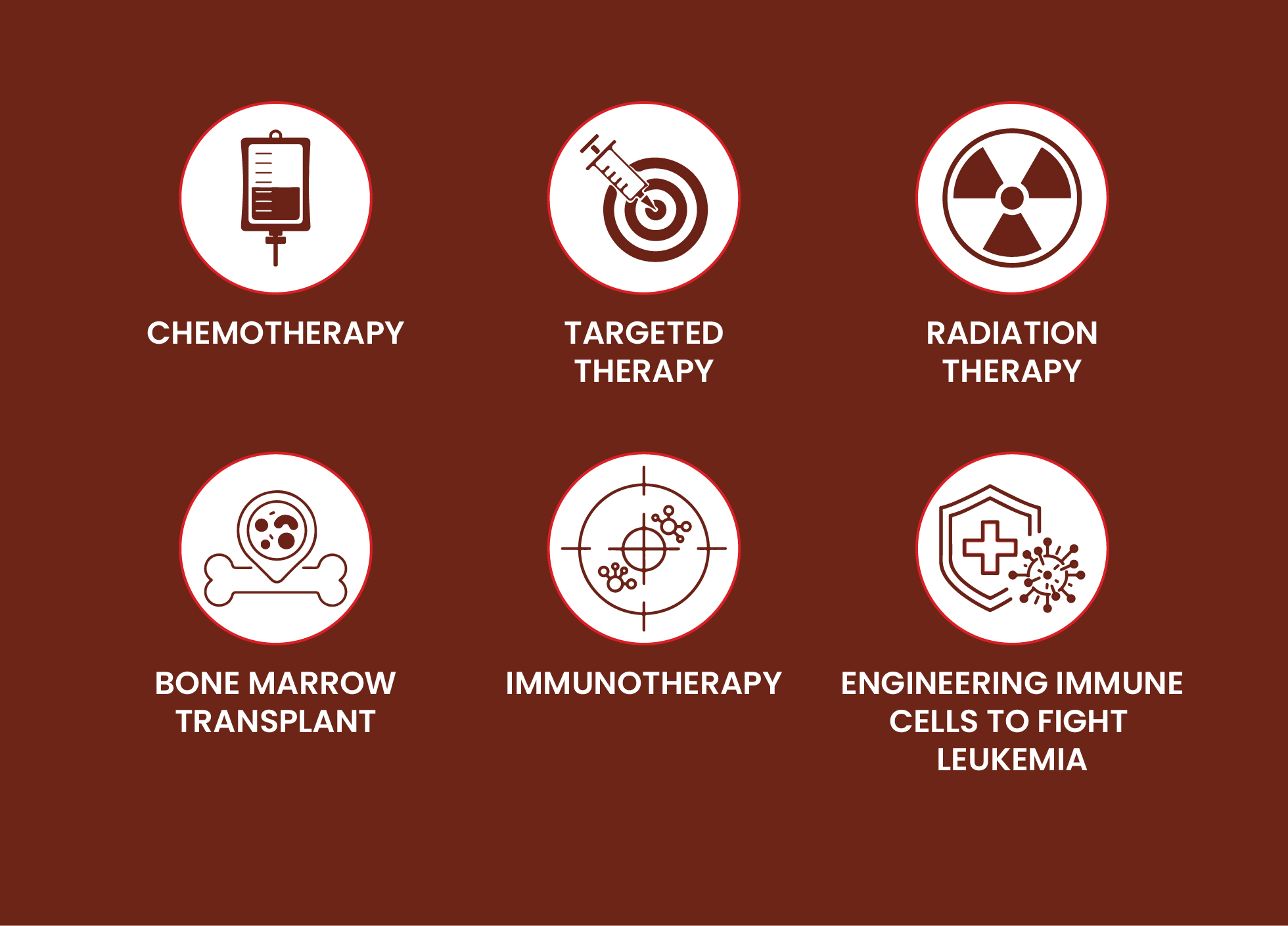Leukemia
Leukemia
 Leukemia refers to cancer that is developed in blood forming tissues of the body, encompassing bone marrow and the lymphatic system.
Leukemia refers to cancer that is developed in blood forming tissues of the body, encompassing bone marrow and the lymphatic system.
Normally, white blood cells help fight infections, but in leukemia, the body produces too many abnormal white blood cells that don’t work properly.
Treating leukemia can be difficult because of its type and other variable factors. Fortunately, there are techniques and procedures that might make a treatment successful.
Signs and Symptoms:
 The type of leukemia may result in different types of symptoms too. Few of the familiar signs and symptoms of leukemia are:
The type of leukemia may result in different types of symptoms too. Few of the familiar signs and symptoms of leukemia are:
- Fever or chills
- Persistent fatigue and weakness
- Unintentional weight loss
- Frequent or severe infections
- Enlarged liver or spleen
- Swollen lymph nodes
- Easy bleeding or bruising
- Recurrent nosebleeds
- Tiny red spots in your skin
- Excessive sweating, especially at night
- Bone pain or tenderness
Diagnosis:
A routine blood test might help your physician to find out chronic leukemia, even before the appearance of the symptoms. In such cases where the signs and symptoms suggest leukemia, diagnostic tests can be performed to confirm the presence.
The list of diagnostic tests for leukemia are:
- Physical Exam: It refers to analyzing the physical signs of leukemia like pale skin because of anemia, swelling of lymph nodes and enlargement of liver and spleen.

- Blood Tests: The unusual levels of red or white blood cells or platelets can be an indication of leukemia which a physician can determine by looking at laboratory results. Not all the forms of leukemia cause leukemia cells to circulate in the blood though blood test might detect the presence of such cells. These cells are mostly present in the bone marrow.
- Bone marrow test: A sample of bone marrow is collected from hipbone on doctors’ recommendation. A long, thin needle is used to removed bone marrow. After collection, the sample is sent for laboratory analysis of leukemia cells. Certain characteristics of leukemia cells are disclosed in the specialized tests performed and they are proved to be helpful in the determination of treatment options.
Treatment:
Different factors affect your treatment of leukemia and your doctor will consider your age, overall health, the type of leukemia and whether it has metastasized (spread to other body parts) before deciding the suitable treatment option for you.
The available treatment options for leukemia are:
- Chemotherapy: The major form of treatment of leukemia is chemotherapy as it utilizes chemicals to destroy leukemia cells. Drugs can be used alone or in combination for different types of leukemia. The drugs can either be administered directly into a vein or can be taken as pills, orally.

- Targeted Therapy: Targeted drugs are like snipers that aim for specific weaknesses in cancer cells and block them, causing the cancer cells to die. These drugs are tested to see if they work, especially for treating leukemia. It’s like using a targeted approach to take down cancer cells.
- Radiation Therapy: High energy beams used in radiation treatment destructs the leukemia cells and inhibits the growth. This therapy uses the machine which moves around you aiming the radiation at certain areas of the body lying on the table. One particular area of body get the radiation and detects the dominance of the leukemia cells or the entire body receives the radiation if affected by leukemia. A bone marrow transplantation can be planned for Leukaemia along with radiation therapy.
- Bone marrow transplant: Also known as a stem cell transplant, it is the reestablishment of the healthy stem cells by replacing unhealthy bone marrow with the healthy bone marrow by regenerating them. Peak doses of chemotherapy or radiation therapy are administered before a bone marrow transplant to kill bone marrow that produces leukemia cells. Once this is done, blood forming stem cells are infused to rebuild bone marrow. Stem cells can be either of your own or from a donor.
- Immunotherapy: Your immune system is used in immunotherapy to attack cancer cells. Cancer cells produce a protein that helps them camouflage from the immune system cells, which prevents body’s disease-fighting immune system to not combat cancer cells. This process is intervened by immunotherapy.
- Engineering immune cells to fight leukemia: This technique involves reprogramming T-cells, which are a type of immune cell, to recognize and attack leukemia cells. By modifying these T-cells in a lab and then infusing them back into the patient’s body, scientists hope to boost the immune system’s natural ability to fight cancer. It’s an exciting and innovative approach in treating leukemia that has shown promising results in clinical trials. T cell therapy can be used only for certain types of leukemia only.
